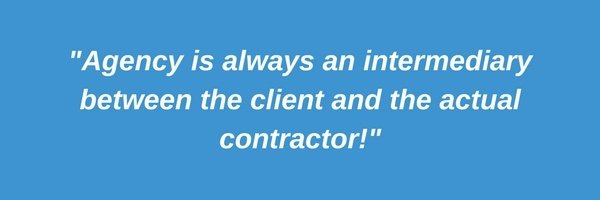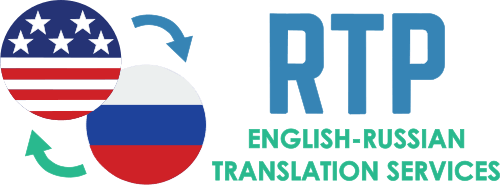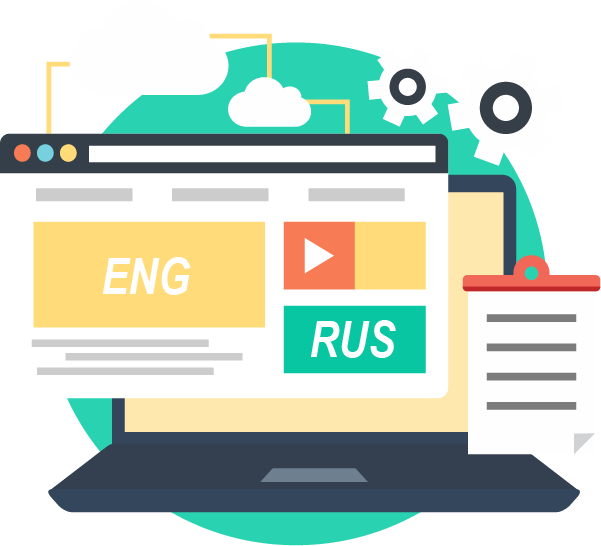You have been planning to expand to the new market or already opened a representative office in another country. Now you need to translate your website into a foreign language.
In other words, you need to make a bilingual or multilingual website for your foreign audience so that your new customers can use your product or service in their native language.
What should you do next?
Who will translate your website?
How much does it cost and how to select the right translator?
You will find the answers to these questions (and some more) in my new post about website translation.
Which one is better for website translation: independent translator or an agency?
First, you have to decide between hiring a translator or a translation agency. It’s hard to find the right solution if you never ordered translation services before. However, it is not too difficult to choose between an independent self-employed translator and an agency based on the following information.
Modern translation agencies hire freelancers to reduce operating costs and add an extra charge for intermediary services. Agencies have numerous overhead costs like higher taxes and dues, salaries for management staff, rental payment, etc. Therefore, if you choose to go with a translation agency, you should understand that these overheads will be included in the cost of services. Hence, be ready to pay more.
One good reason why you may want to choose a translation agency is that you need to translate your website into more than two or three languages. In this case, it will be easier to hire an agency to manage the entire process: find translators for each language pair, distribute the files, track progress, collect files from multiple translators, arrange quality control and final delivery.
However, if you need to translate your website into 1-3 languages, you should certainly choose independent translators. This way you can optimize your translation expenses and get more personal service from a direct contractor.
In addition, communication with the direct contractor simplifies and accelerates the ‘change and modify’ process because you don’t need to wait until your message goes through the process chain (client — project manager — translator — project manager — client).
Translators can also ask questions about the content and receive your comments faster, this way the entire translation process becomes more consistent and efficient.
How much does a website translation cost?
The cost of translation depends on many factors, such as language pair, subject field, delivery date, target audience, etc. You can find a detailed information about translation rates and prices in my recent post: “How much does a translation cost?”
In general, the cost of translation is calculated based on the scope of work, to be specific, the number of words or characters in the source text. Depending on the file format, translators use different methods to calculate the scope of work. If you decide to provide the text of your website pages in Word format, you can use inbuilt word count function: go to Review tab, in the Proofing group, click the Word Count button.
When you find out the number of words, you can ask you translator about per word rate and multiply it by the number of words.
For instance, let’s say you need to translate a one-page website or landing page consisting of 500 words. We offer English-Russian website translation at $0.14 per word. In this case, the cost of work will be 500 * 0.14 = $70.
If you provide the website files in HTML or another web format, translators use special tools called CAT-tools to calculate the exact statistics for your files. This simplifies the localization process as in some cases all you need is to copy the translated website files in a dedicated language version folder on your hosting (e.g. http://yoursitedomain.com/rus) and make some minor adjustments to launch the bilingual website.
How to optimize your website translation expenses?
The cost of translation, among other factors, largely depends on the country where your order translation services. Due to the different tax regimes, labor expenses and other factors, translation companies and translators living in the developed countries have to charge more for their services in comparison to the companies and individuals living in the developing countries.
Countries
Ideally, it is better to order translation from a translator who is a native speaker of a target language and lives in the country where the target language is the official one. Moreover, when you order services from a European or American translation company, in most cases your translation will be assigned to a native translator working remotely and living in a foreign country where the target language is commonly accepted. You can learn more about this topic from our recent post “Should you choose a native translator for your translation needs?”
For instance, when it comes to the English-Russian translation, numerous European and American translation agencies hire freelancers from Russia, Ukraine, Kazakhstan, Kyrgyzstan, and other CIS countries, where the Russian language is the official one.
In the case of English-Russian translation, there is a tangible difference between translation rates charged in the US and translation rates in the Russian-speaking countries. Therefore, if you want to optimize the expenses for your English-Russian translation projects, it is better to hire a translator from CIS countries.
Taxes
Another good reason to hire a translator from a developing country is the tax regime. Taxes charged in the European countries and the USA are higher than in the developing countries due to a number of economic reasons.
For example, being a sole proprietor I pay 6% income tax and social expenditures amounting to 10% of the average salary on a monthly basis. I have a team of translators to cope with large projects and ensure quality control, but my team members are freelancers who pay taxes on their own. We have fixed rates for translation services, therefore, there are no any hidden charges. I use the internationally recognized bank to accept payments and all settlements procedures are totally secured.
Translatable content
You can also reduce the cost of translation by removing non-translatable website sections or content from the translation project.
For instance, you are going to sell a certain product line in a foreign country, but not the entire list of your product. Then you can order translation of your homepage, UI and a category of your website.
In addition, you can optimize the expenses for translation of media content (if you have any). For instance, translation of video subtitles is cheaper than dubbing.
How to find the right specialist for your website translation?
After you decided to hire an independent translator it is high time to find the right one for your website translation. What are the main criteria? You can find more information about that in this post “How to find the right translator for your translation project”.
Alternatively, here are some quick tips:
Places to find translators online
Professional community website with a large database of translators and comprehensive filtering system.
A unique search engine designed to find translators best fitting your content. You can find translators based on their actual work experience and fields of specialization.
- Translation Portals
You may also find translators on specialized portals like Proz and Translators Café. In this case, you will have two options: find a translator in the database or publish a job posting.
However, my advice is to search through the directory to find a translator based on the selected filter option. If you post a job offer, you will receive an enormous amount of messages from all members who claimed the selected language pair as their working pair.
This long list will include everyone from newbies to established translators and you will definitely get lost among proposals (80% of which will be copied standard “hire-me” emails).
When you find several candidates, in addition to the above-mentioned details, turn your attention to the following information on the translator’s profile:
Language Pair
It has become an industry standard to assign translation tasks to the translators who are native speakers of the target language. It is assumed that native speakers have the so-called linguistic feeling and deeper, sometimes subconscious knowledge of the target language reality.
Experience
Strong experience in website localization is a mandatory condition when selecting a translator for your website translation project. The experienced translator will be able to help you to avoid underlying potential problems and offer improvements. For instance, I offer free SEO optimization as a bonus to website translation services.
Specialization
Same as doctors specializing in certain parts of a human body, professional translators specialize in a certain field of expertise that allows conveying the meaning of the source language into the target language with the highest level of precision possible. For example, my fields of specialization include technical, legal and marketing translations.
Cost of translation
I already mentioned the issue of pricing and rate above, but I have to warn you against cheap translation:
Beware of cheap translation services as low prices mean a relevantly low quality of work!
Translation is a complex intellectual service and in spite of a common misconception about its simplicity, this field of expertise requires a deep knowledge of at least two languages, their grammatical, stylistic, syntactical structures, lexicology, general erudition, and subject-specific experiences.
Serious translation business is not a place for amateurs as a simple translation mistake can ruin your reputation.
Translator’s Profile, Portfolio, and Testimonials
Take a look at the Translator’s Portfolio to find the projects related to the subject matter of your website. Overall completeness of translator’s profile on a translation portal or general content of a translator’s website forms a general image of a translator as a specialist. Also, ask for recommendations or take a look at the Testimonials section to find out the opinion of other clients.
Test Translation
Finally, if you still need another proof of a translator’s professionalism, ask for a short translation test (200-250 words). However, in this case, you will have to find another professional translator who will be able to check the quality of work.
What are the methods used for website translation?
The methods used for the translation of your website will differ depending on the type of CMS (Content Managment System) and the structure of your website in general. Also, there are many tools on the web that offer localization services through their cloud platforms, like Easyling Translation Proxy. However, such platforms cannot offer a universal solution for all types of websites.
WordPress self-hosted websites
If you have a WordPress website, localization process can be streamlined due to a number of localization plugins helping to translate everything from dashboard content to UI, pages, blog posts
- WPML (paid option) — one of the most popular localization plugin to make your site multilingual. It supports over 40 languages and offers three plans suitable for different website and localization purposes.
- qTranslate X (free option) — one of the most popular plugins for the creation of multilingual content available for free.
You can find more about WordPress localization plugins from the post “Top 6 translation plugins for your WordPress website.”
- Other CMS and self-built websites
There are dozens of content management systems on the web. All of them have a different structure, code and localization solutions available on the market.
Such popular CMS and Joomla and Drupal offer special extensions for translation purposes. However, it is quite possible to use a simple solution applicable for a bilingual website: you can install a new version of CMS on a separate subdomain (rus.yourdomain.com) or subfolder (yourdomain.com/rus) on your hosting, replicate the structure of your main website and import translated content.
This can be applied to WordPress website as well, but as distinct from other CMS, WordPress has a wonderful feature called “multisite” — you can install multisite WordPress version and create new language versions from your dashboard without a fuss.
In this case, all your plugins, settings, and a theme will be active for all websites (language versions) within your network. This is a topic for a separate post and I will cover it in details in one of my future posts.
What do you need to provide for website translation?
Prerequisites for website translation may vary depending on the selected localization method.
If you have a WordPress website and choose to go with a plugin, you can either use translation service offered by plugin developers, for instance, WPML is operated by OnTheGoSystems, which also runs ICanLocalize, a professional translation service, or hire a professional translator familiar with this system.
If you decide to create a multisite, you can copy and import your main website content into the new version and give access to a skilled translator to translate your website from a dashboard.
Alternatively, you can provide an import XML file to the translator without granting an access and then import the translated XML version into your WordPress website.
If you have a self-build website, you can send HTML or similar web files to the translator who will be able to translate them using special CAT tools.
Now you know the answers to the main questions about website translation. If you need any consulting related to the website translation process, please do not hesitate to post your questions below or contact me via email.

